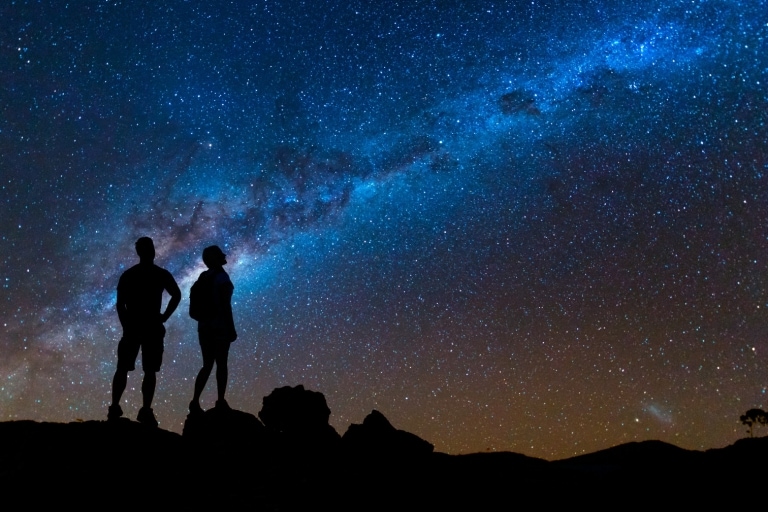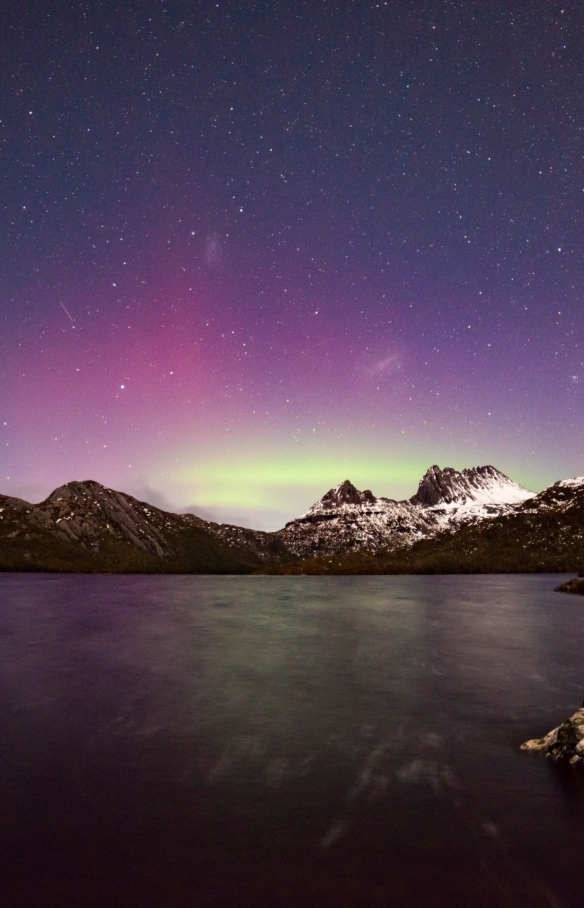
Arkaroola Wilderness Sanctuary, Flinders Ranges, South Australia © South Australian Tourism Commission
Australia’s ultimate stargazing locations
Remote destinations and ink-black skies make Australia one of the best places in the world to gaze at a marvellously bright Milky Way.
Marvel at the Milky Way
Marvel at the Milky Way
The Milky Way contains billions of stars, and when you gaze into the desert skies above Central Australia, you’ll feel like they are all blazing down on you. Just outside of Alice Springs, Earth Sanctuary’s astronomy tours highlight planets, constellations and lesser-known phenomena such as dark nebulae. Join an experienced guide to explore the marvellous southern night sky using a laser pointer and telescope.
Be amazed at the Aurora Australis (Southern Lights)
Be amazed at the Aurora Australis (Southern Lights)
The Aurora Australis, or Southern Lights, illuminate the night sky with hues of green, blue, purple and red in a spectacular natural display. The light show is visible all year round from Tasmania, although you are most likely to see it during winter at locations that are free from light pollution. Hobart’s highest mountain, kunanyi/Mount Wellington, offers a magnificent viewpoint, as does the nearby Mount Nelson.
Sleep under the stars
Sleep under the stars
Love the idea of falling asleep beneath a blanket of stars? Wherever you go in Australia, you will find glamping and off-grid experiences that allow you to soak up the full splendour of the night sky. Simply step outside your tent and look up to see the spectacular display in all its glory at destinations such as Queensland’s Nightfall camp, New South Wales’ Paperbark Camp and Arkaroola in South Australia’s Flinders Ranges.
Moon-gaze at Perth Observatory
Moon-gaze at Perth Observatory
You don’t need to go far from the city to enjoy a spot of stargazing. In Western Australia's capital, the Perth Observatory has been around for more than 120 years, boasting modern and historic telescopes to showcase globular clusters, nebulae, star clusters and galaxies. Choose from a range of Night Sky Tours including a Moonlit Night option, which allows you to explore the intricate details of the moon’s surface.
Learn about Indigenous astronomy
Learn about Indigenous astronomy
Have you ever noticed the giant emu in the night sky? During the Universal Dreaming tour, the guides at Cosmo Centre in outback Queensland will show you the people and animals that, according to Indigenous lore, live among the stars. Take a seat around a campfire and roast marshmallows as you listen to ancient stories from the world’s first astronomers. Tours with the Cosmos Centre run from April to September each year.
Dine under the stars
Dine under the stars
Candlelit dinners can’t compete with starlit dinners, particularly when they take place in one of the outback's most picturesque locations. Experience a multi-course dinner highlighting native ingredients before sharing Aboriginal stories and decoding the night sky as it glistens above you. Choose from Sounds of Silence or Tali Wiru at Uluru, or Under a Desert Moon at Kings Canyon.
Experience a dark sky park
Experience a dark sky park
High altitude, low humidity and distance from the big cities gave Warrumbungle National Park the status of the Southern Hemisphere’s first Dark Sky Park, and the stargazing here is second to none. Siding Spring Observatory, on the edge of the national park, is home to the largest optical telescopes in Australia. Pitch a tent to sleep beneath the stars at well-equipped spots like Camp Blackman.






















































































































































